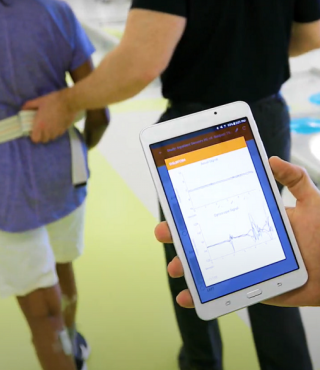Literature Review: (Magasi & Post, 2010)
- Confirmatory Factor Analysis (CFA) suggested a 7-factor model (however, some factors were highly correlated)
- Principle Component Analysis (PCA) resulted in a 2 factor solution
Musculoskeletal, Neurologic and medically complex disorders (Gandek et al, 2007)
- Participant with different diagnosis differed significantly (P < 0.001) on all scales (except domestic life)
- Participants with higher Rankin scores tended to score lower in the mobility, role functioning, and community, social, and civic life domains.
Multiple Diagnoses: (Keysor et al, 2006 (n=342; diagnoses: complex medical (eg, COPD, MI, heart surgery, post-surgical debility), orthopedic (eg, fractures or amputations), neurologic (eg, stroke, Guillain-Barré syndrome, Parkinson’s disease, multiple sclerosis, traumatic brain injury) from acute care and inpatient rehabilitation; mean age=68 (14); 49% female)
Pearson Correlation Coefficients of Home and Community Environment with Community Participation and Social and Home Participation
|
|
1 Month (n=342)
|
|
6 Months (n=270)
|
|
|
Home and Community Environment
|
Social and Home Participation
|
Community Participation
|
Social and Home Participation
|
Community Participation
|
|
Home mobility barriers
|
NS
|
NS
|
NS
|
NS
|
|
Community Mobility barriers
|
.116*
|
-.127*
|
NS
|
NS
|
|
Mobility technology barriers
|
.170***
|
-.330***
|
NS
|
-.283***
|
|
Communication technology barriers
|
NS
|
NS
|
NS
|
.148**
|
|
Transportation facilitators
|
NS
|
.279***
|
NS
|
.134*
|
|
Social support
|
.408***
|
.137**
|
.344***
|
.154**
|
NS: Not significant; *P<.05, **P<.01, ***P<.001
- After adjusting for covariates, 1 month after discharge, a greater presence of home mobility barriers (P <.01) was associated with less social and home participation; greater community mobility barriers (P<.01) and more social support (P<.001) were associated with greater participation
- At 6 months, social support was the only environmental factor associated with participation after adjusting for covariates.
Multiple Diagnoses: (Jette et al, 2005; n=435; diagnoses: complex medical (eg,COPD, MI, heart surgery, post surgical debility) , orthopedic (eg, fractures or amputations), neurologic (eg, stroke, Guillain-Barré syndrome, Parkinson’s disease, multiple sclerosis, traumatic brain injury) from acute care and inpatient rehabilitation; mean age=67.4; 50.8% female)
- Activity limitations (Movement/physical, Personal care & instrumental, Applied cognitive) were the dominant factors that explained much of the variance in the extent of community participation achieved by patients.
- Personal (psychological, persistence, age, gender, race)and social environmental factors (social support) played a major role in predicting levels of social and home participation.


